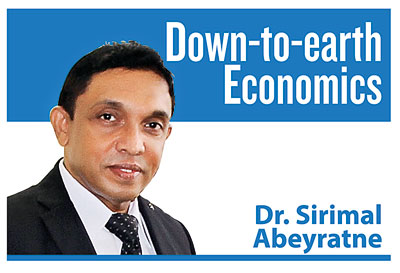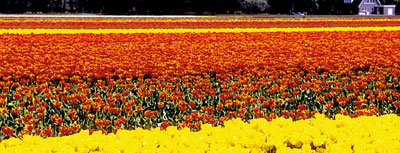Netherlands farmers and Sri Lankan doctors
View(s):Sandra was born to a Sri Lankan mother, and adopted by a Dutch mother. She was a 12-year old child, when I met her and her foster parents, some time ago in the Netherlands. Sandra’s foster parents wanted me to help her.
I was there on a scholarship, studying for my doctorate at the Free University of Amsterdam and living in a quiet and beautiful city by the North Sea – The Hague.
Sandra and her parents had come to Sri Lanka, searching for Sandra’s biological mother. And they had found her; what a moment it would have been for the Sri Lankan mother who saw her daughter after 12 years! But there was no direct communication between the mother and the daughter, as they didn’t understand each other’s language.
After they returned from Sri Lanka, Sandra’s biological mother started sending letters to her daughter, of course written in Sinhala. Sandra’s foster mother also wanted to read them and reply. The help that was asked from me was to provide translations of the letters to both sides and, I started doing that.
There was something in this correspondence, which struck my mind and heart: The Sri Lankan mother did not forget to emphasize in her letters to the daughter, “Whenever you come again to see me, it is my desire to see you as a lady doctor!”
As this request, or rather the advice appeared quite often in her letters, Sandra’s foster mother once replied to it: “Sandra doesn’t like to be a medical doctor; rather she wants to be a farmer!” I didn’t think they understood what each other was saying. But I was quite certain that the heart of the Sri Lankan mother would have been blown to pieces if I had done the literal translation of that reply.
Farmers here
Recently, I was disturbed by seeing the pictures of disappointed, hopeless and helpless farmers who were sitting on their vegetable loads, trucks and tractors parked at Sri Lanka’s major vegetable markets. Only after they brought their vegetable produce to the wholesale markets, they found that there were no buyers!
Being unable to sell their harvest of months of labour and sweat, they had to spend a sleepless night in the market awaiting the buyers. They were exhausted by morning to the point that they were more than happy just to get rid of the load, as there was no hope of selling the produce. Even if they never sold it, they still had to pay the transportation costs to the vehicle owners.
The middle stretch of the vegetable value chain is a peculiar area where much of the transaction costs, rent-seeking costs, and wastage costs are added to the price. As a result of weak market mechanisms controlled by external forces, neither the producer nor the consumer has any bargaining power.
Farmers there
Farmers in the Netherlands are agri-business owners and, belong to the upper-income class. Their social, political and economic status is much higher than that of the doctors who are engaged in an average profession.
Agriculture in the Netherlands is modernised and mechanised, while farmers work with all types of land vehicles, machines, and computers, all owned by themselves.
In most of the cases they also run their own post-harvest packaging, processing, storing, and transporting facilities. They also focus heavily on technological upgrading. They are not subject to the impact of seasonal variations in climate conditions: they control artificial temperature and artificial light within greenhouses so that even in the freezing winter they can bring out a better agriculture harvest.
According to 2016 World Bank data, real agriculture value added per worker in the Netherlands is US$84,142 a year or $7,011 a month; this is not different from the agriculture value added even in the US as a large country. Compared to that, real agriculture value added per worker in Sri Lanka is only $1,415 a year or $118 per month.
It is noteworthy that the real value added is calculated in constant prices, and is only part of the total output sales value. Nevertheless, this simple illustration is sufficient to understand that farmers in the Netherlands are rich and the farmers in Sri Lanka are poor. This difference can also explain why the farmers in the Netherlands enjoy much higher economic, social and political status, compared to farmers in Sri Lanka.

Tulip flower farm in the Netherlands.
What makes the difference?
Now we have a fundamental question to answer; what makes the difference between a farmer here and a farmer there? I have no dispute against the fact that the Netherlands is a developed country in the Western hemisphere which has over $45,000 per capita income, compared to $4,000 in Sri Lanka. Nevertheless, even for achieving the developed country status in the Netherlands, the contribution made by its agriculture sector was important.
Why the agriculture value added per farmer in the Netherlands is so high and can be comfortably compared to that in the US is because the number of farmers there is small: there are less than 200,000 farmers in the Netherlands, which is only 2.2 per cent of the country’s total employment in 2016. The Netherlands is a small country with 33 thousand square kilometres of land area and, 17 million population.
In Sri Lanka there are 2 million farmers which is 28 per cent of the country’s total employment. Sri Lanka, which is bigger than the Netherlands has a population over 21 million and, land area over 62 thousand square kilometres. Thus it is clear that the Sri Lankan agriculture sector has too many people, producing too small output and, consequently earning too little average income. They are vulnerable to shocks and, dependent too much on government’s handouts.
Average farm size
In fact, in the Netherlands agricultural land is scarce and population density is high; it has only 18,370 square kilometres of agricultural land. Compared to that, Sri Lanka has 27,400 square kilometres of agricultural land. But the difference is that the average farm size in the Netherlands is 26 hectares, compared to half a hectare in Sri Lanka (excluding the plantation sector).
Even after being a smaller country and still constrained by high population density, the Netherlands managed to have a reasonably large average farm size because just a few farmers are left in the entire agriculture sector.
When the scale of production is too small, each farmer produces too little and the average income is too low – the main problem of being too small. In addition, that smallness determines not only the economic status, but also the social and political status of the farmers who are left helpless and hopeless in the market which is not a level playing field for them.
When the scale of production is reasonably big enough, the farmers are also capable of modernization and mechanisation of their production activity and of undertaking the application of research and development for technological upgrading. Thus, even though the country is small, the agriculture sector in the Netherlands competes well with large countries in the international markets, producing specific horticulture, dairy products, meat, vegetable, and fruits.
Raising the farmer standards
Can we improve the status of Sri Lankan farmers? Well, you can’t really do that with “Samurdhi”, fertiliser subsidy, and other types of handouts from the government or even with agriculture protection. If we can, we would have already done it for long ago, because there has been no shortage of such policy measures in Sri Lanka.
Farmer status will improve when non-agriculture sectors (industry and services) grow fast enough in order to accommodate labour from the agriculture sector, leaving a few thousands of farmers in reasonably large farm lands.
This will then result in agriculture transforming into modern agri-businesses and, farmers into agri-entrepreneurs with higher bargaining power in the market. If anyone decides to be a farmer in such an environment it is a rational choice rather than not having any other choice. (The writer is Professor of Economics at the University of Colombo).


